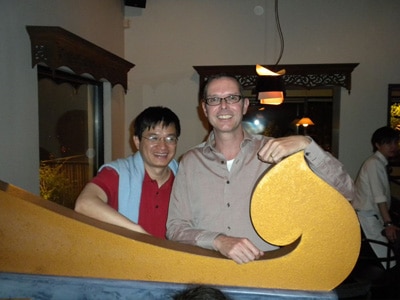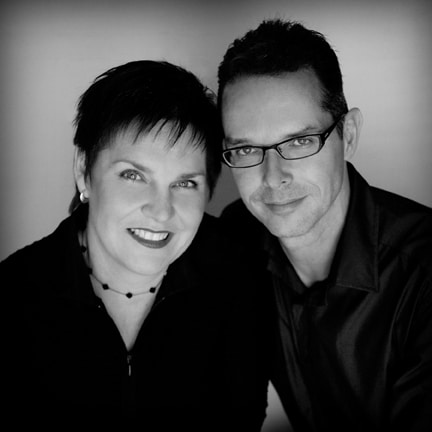
QiGong Master – My LIfe and Secret Teachings by Robert Peng with Rafael Nasser
I first met with Robert Peng last April at a dinner party in Washington DC where I was fortunate enough to be sitting next to him and to be able to discuss Qi Gong and the system of Reiki. During dinner he showed me some of the photos from his upcoming book, which has now been published. I met up with Robert again in October 2010 when I was teaching in New York and we shared healing sessions together. His session on me was just amazing, I could literately feel a strong energy current going through my body making its way deeper and deeper into my being. Afterwards I felt like I was being lit up from the inside out.
But let me get back to his book…
The book consists of 4 parts.
The first part of the book is his life journey from when he was 8 years old and he met his spiritual master Xiao Yao up until he finally started teaching Qi Gong in Australia and the USA. This journey is in itself a teaching as we can read how the masters of old used to teach their students which in turn made them into real masters themselves. This occurred through years and years of dedicated practice, of which some might seem extreme in nature, like when his teacher instructed him to do one hundred days of fasting in the dark without food! Xiao Yao also taught Robert that “A strong root gives you power and mobility” which is often forgotten in many modern spiritual practices; a strong base is a must in order to discover your own true nature.
In the second part he introduces us to the 4 golden wheels, which consist of 3 energy centres (dantiens), one below the navel, one at the heart and one in the head, and the 4th golden wheel which is the central meridian. This part gives one of the most detailed explanations about the three dantians I have come across in any book. One of the interesting chapters in this part is where, in discussing the 3 dantiens, he explains when they in balance or out of balance and what the implications are for a practitioner’s own health and well-being. This chapter alone is already one reason to buy this book, no matter whether you are a beginner or a serious practitioner and no matter if you practice Qi Gong or the system of Reiki. In the traditional Japanese system of Reiki these three energy centres* are also utilized, especially in conjunction with the 3 symbols and mantras of Okuden Reiki Level II.
But it is not only this chapter which is great, this second part also includes numerous wonderful techniques to work with the 4 golden wheels.
Part three teaches us more exercises, of which some are known as the Essential Practices, to delve deeper into empowering the 4 Golden Wheels; these are unique moving, sound or visualization meditations. By applying these meditations we can bring our life more into harmony and balance. These practices are very clearly describe and therefore easy to follow and practice.
In part 4, My Qi Gong Life, Robert guides us through a daily practice routine which will help you to get the most out of the techniques and methods described in the book. This will make it easy for the reader to employ a daily routine.
A couple of quotes from QiGong Master to wet your appetite:
We’ve all tasted happiness, that magical sense of well-being that arises when we come into harmonious alignment with the Universe for no apparent reason. At these times we seek nothing, desire nothing, expect nothing, and want nothing. We are perfectly poised in the present moment. The mind is still. The heart is open. The body is calm. Life flows.
But ultimately, altered states of consciousness and obtaining supernatural powers do not constitute the primary goals of spiritual development. There is one spiritual accomplishment that prevails over all the others, just as the sun outshines all the starts in the daytime sky, and that is the attainment of happiness.
Spirituality refers to the process of cultivating our Qi by empowering and refining the 4 Golden Wheels and balancing the Three Treasures – Human Qi, Heaven Qi, and Earth Qi.
“Frans’ Reiki session brought me into deep relaxation and enchantments.”
Robert Peng – International QiGong Master and author.
There are many hidden gems to be found in this book which correlate with the traditional practice of the Japanese art of Reiki. Although Taoism was introduced into Japan during the 5th and 6th century, it never existed in Japan as the same tradition, instead Taoism merged with and was influenced by Shinto and Buddhist teachings. Traces of Taoism can consequently be found in many Japanese spiritual teachings, like the system of Reiki. This however doesn’t mean that the system of Reiki comes from Taoism, it is a unique Japanese spiritual practice with Buddhist, Shinto, Shugendo, Japanese Folk Belief and Taoist elements merged within it.
One of the Taoist elements that can be traced back from the system of Reiki is the 3rd symbol/mantra, commonly known as the “distance symbol” in modern systems of Reiki. This symbol, which is in fact Japanese kanji (writing), has been found in a 17th century booklet of Onmyodo teachings. Onmyodo (which translates as The Way of Yin – Yang) are Japanese teachings based on the Chinese yin-yang philosophy. For more info on the link between Onmyodo and the “distance healing” symbol.
To buy Robert Peng’s book click here.
*The 3 energy centres in Japan are called:
Ka Tanden (Ge Tanden) – Below tanden (hara)
Chu Tanden – Middle Tanden (centre of chest/heart)
Sho Tanden (Ue tanden/jotanden) Upper Tanden (forehead)
We’ve all tasted happiness, that magical sense of well-being that arises when we come into harmonious alignment with the Universe for no apparent reason. At these times we seek nothing, desire nothing, expect nothing, and want nothing. We are perfectly poised in the present moment. The mind is still. The heart is open. The body is calm. Life flows.
But ultimately, altered states of consciousness and obtaining supernatural powers do not constitute the primary goals of spiritual development. There is one spiritual accomplishment that prevails over all the others, just as the sun outshines all the starts in teh daytime sky, and that is the attainment of happiness.
Below is a video of Heather Alexander of the International House of Reiki interviewing Robert Peng in New York.
“Frans’ Reiki session brought me into deep relaxation and enchantments.”
Robert Peng – International QiGong Master and author.

Robert Peng and Frans Stiene
Bronwen and Frans Stiene are the co-founders of the International House of Reiki and co-authors of The Reiki Sourcebook, The Japanese Art of Reiki, Your Reiki Treatment, The A-Z of Reiki Pocketbook and the Reiki Techniques Card Deck. Bronwen and Frans teach in the USA, Europe and Australia. Visit the Courses page to find a course near you.


Comments 2
I live in Cairns and am wanting to get a copy of Robert Peng’s new book, but the cost of the postage (from his site) is almost the same cost as the book. Do you have any copies that you are selling, or do you know where I can get a copy in Australia?
Look forward to hearing from you
Best regards
Alison
Hi Alison,
Not sure where to buy it here in Australia. And I do not think it is on Amazon either.
Good luck.